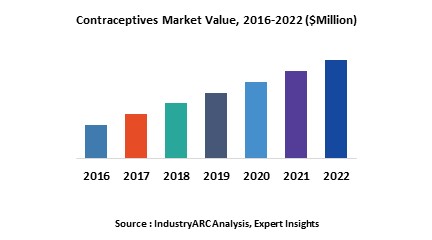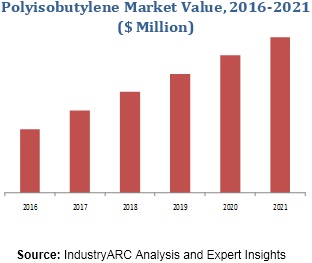Nutraceutical Ingredients Market Overview:
According to the Food and Agricultural Organization of the United Nations (FAO), the number of undernourished people or the ones that are facing chronic food deprivation increased from 804 million in 2016 to 821 million in 2017.[1] Similarly, there is a multitude of people that aren’t undernourished in terms of food but stay deprived of proper nutrition and subsequently suffer from ramifications of malnutrition and dietary deficiencies. Nutraceutical ingredients, a type of food additives help to ameliorate the medical problems that arise due to nutrition deficiency. The current millennial lifestyle is leading to more issues regarding malnutrition, and so, dietary supplements including nutraceutical ingredients have gained prominence in the market. The health concerns pertaining to nutrition is leading to growth opportunities in the nutraceutical market that had a market size of $31.4 billion as of 2018. The demand for nutraceutical market for various purposes will observe a definite demand in the future that is projected to observe a healthy compound annual growth rate (CAGR) of 6.80% during the forecast period of 2019 to 2025.
There is an increasing awareness about health and wellness in APAC, and discernibly so when people more often than not browse health blogs and videos to acquire knowledge about the same. There is a lot of reasons because of which APAC is found to be a lucrative nutraceutical ingredients marketplace, and some of them are rising undernourished and aging population in the region. This is substantially backed by advertisements and awareness campaigns regarding nutritional issues and benefits of the nutraceutical ingredients that is spurring people to purchase the products. Furthermore, there is an increased demand for nutritional products from athletes, which is further adding to the growth prospects in the APAC nutraceutical market that had a global market share of 37% in 2018.
Nutraceutical Ingredients Market Outlook:
Nutraceutical ingredients are dietary supplements that are used in therapy of some diseases as functional foods, and they are categorized as organic ingredients and exotic ingredients. These are consumed in the form of liquid and powder. Owing to their advantageous effect in the daily diet, they are most prevalently used as dietary supplements. The growth opportunities for the vendors in the nutraceutical ingredients market is increasing due to their application as dietary supplements.
This is majorly attributable to the fact that nutraceutical ingredients, when consumed regularly in diet, impart a gamut of physiological benefits in a human body. People have not become aware of these benefits, and so, their application as dietary supplements is growing, and it is estimated that it will further grow with a substantial CAGR of 6.80% through to 2025.
Nutraceutical Ingredients Market Growth Drivers:
· The Rise in Disposable Personal Income –
Economic growth worldwide is leading to a perceptible rise in disposable personal income (DPI). This can be better understood with the findings by the Organization for Economic Co-operation and Development (OECD) as they have documented that the counties across the globe are observing a percentage increment of 0.2% to as much as 7.4% in the household DPI,[2] which is proving to be a revenue avenue determinant for the vendors in the nutraceutical ingredients market. It is majorly because of the fact that the rise in DPI has enabled people to spend on dietary supplements that can suffice their all nutritional needs. Even though some economies are not observing an increase in DPI, the nutraceutical market has a sustainable customer-base in the developing economies.
· The Increasing Geriatric Population –
According to the United Nations (UN), the global geriatric population was 962 million in 2017. Furthermore, the organization estimates the figure will surpass the 2 billion market and translate to 2.1 billion in 2050 and 3.1 billion in 2100.[3] Evidently, aging and problems pertaining to it will be rampant in the coming years, which will significantly support the nutraceutical market as these dietary supplements have anti-aging properties that help an aged person to overcome the side effects of aging.
· The Application of Nutraceutical Ingredients in Drugs –
Nutraceutical ingredients are have found a favorable marketplace in therapeutic areas. These find applications as an ingredient of drugs because they are found to help in curing severe medical conditions such as CHD, cancer, osteoporosis, diabetes, and hypertension. Nutraceutical ingredients are also helpful in alleviating cold & cough, sleeping disorders, and digestion issues. Furthermore, they have anti-arthritic characteristics which makes them useful in treating patients with arthritis. According to the International Diabetes Federation (IDF), the number of people suffering from diabetes was 425 million, and the organization also estimates that the figure will catapult to 629 million by 2045.[4] Similarly, the concern regarding other diseases is increasing, which is projected to drive the future of the nutraceutical ingredients market.
Nutraceutical Ingredients Market Trends –
· In July 2018, NZMP which is a renowned global ingredient brand had launched innovative ingredients that had abundant protein. This innovation was done to cater to the demand from North American customers. The organization also formulated a unique protein-fortified dessert.
· In August 2017, Innophos completed the acquisition of Novel Ingredients and created a $50 billion food and nutrition platform. The acquisition was envisioned to position the organization in the nutraceutical market.
· In November 2017, Innophos again acquired the ingredient company NutraGenesis to further diversify its portfolio.
Nutraceutical Ingredients Market Challenges –
The major challenge faced by the vendors in the nutraceutical market is that these food additives are expensive, and so, these are not affordable to everyone. Furthermore, the target customers have become health and nutrition conscious. While this seems to help the nutraceutical ingredients market, a substantial magnitude of customers are deviated to naturally occurring nutrient sources such as vegetable and fruits which dwarfs the market size. However, the growing concern regarding diseases and the augmented application of nutraceutical ingredients in drugs is chiefly spurring the sales in the market. Furthermore, some of the natural nutrients sources aren’t adequate to suffice the dietary deficiency, which is opening up opportunities for the vendors in the nutraceutical market.
Nutraceutical Ingredients Market Key Players Perspective –
The major players striving to capitalize on the demand for nutraceutical ingredients are Cargill, Incorporated, BASF SE, The Archer Daniels Midland Company, Associated British Foods plc, DowDuPont Inc., Arla Foods amba, Ingredion Incorporated, and Koninklijke DSM N.V.
Nutraceutical Ingredients Market Research Scope:
The base year of the study is 2018, with forecast done up to 2025. The study presents a thorough analysis of the competitive landscape, taking into account the market shares of the leading companies. It also provides information on unit shipments. These provide the key market participants with the necessary business intelligence and help them understand the future of the nutraceutical ingredients market. The assessment includes the forecast, an overview of the competitive structure, the market shares of the competitors, as well as the market trends, market demands, market drivers, market challenges, and product analysis. The market drivers and restraints have been assessed to fathom their impact over the forecast period. This report further identifies the key opportunities for growth while also detailing the key challenges and possible threats. The nutraceutical ingredients market research report also analyses the application of these food additives on the basis of nutrients such as prebiotics, probiotics, and vitamin minerals.
Nutraceutical Ingredients Market Report: Industry Coverage
This report also documents the applications as functional F&B and dietary supplements in the form of liquid and powder.
The nutraceutical ingredients market report also analyzes the major geographic regions as well as the major countries in these regions. The regions and countries covered in the study include:
North America: The U.S., Canada, Mexico
South America: Brazil, Venezuela, Argentina, Ecuador, Peru, Colombia, Costa Rica
Europe: The U.K., Germany, Italy, France, the Netherlands, Belgium, Spain, Denmark
APAC: China, Japan, Australia, South Korea, India, Taiwan, Malaysia, Hong Kong
Middle East and Africa: Israel, South Africa, Saudi Arabia
"We also publish more than 100 reports every month in “Food and Beverage”, Go through the Domain if there are any other areas for which you would like to get a market research study."











